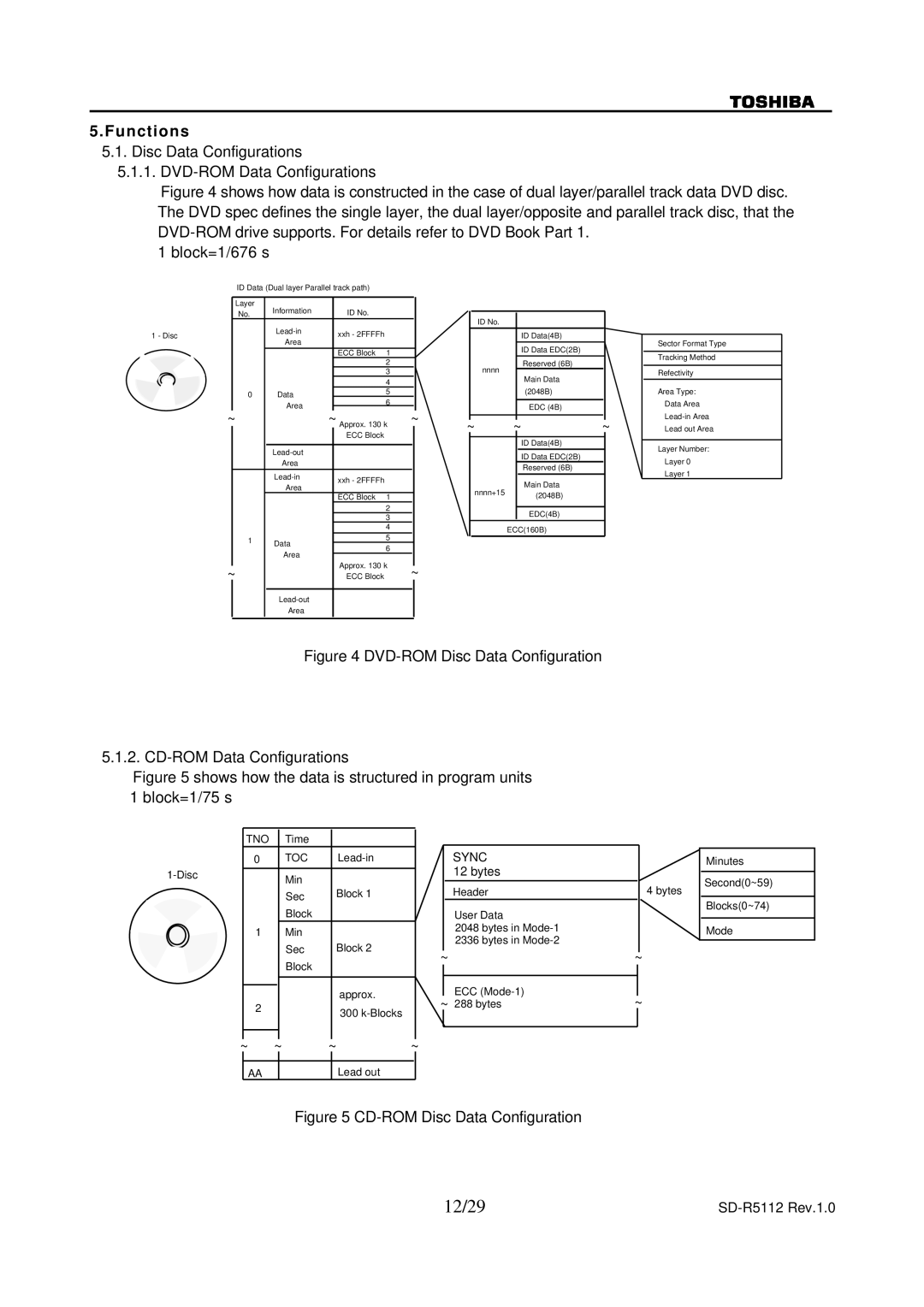SD-R5112 specifications
The Toshiba SD-R5112 is a versatile optical disc drive that has garnered attention for its solid performance and wide compatibility. Released during a time when the demand for reliable CD and DVD solutions was surging, the SD-R5112 has ingrained itself as a notable product in the world of optical drives.One of the main features of the Toshiba SD-R5112 is its ability to read and write multiple formats, including CD-ROM, CD-R, CD-RW, DVD-ROM, DVD-R, and DVD-RW. This broad compatibility makes it an excellent choice for users who require flexibility in their media handling, whether for data storage, software installation, or multimedia playback.
The SD-R5112 employs Advanced Digital Format (ADF) technology, which enhances the data storage capability of CDs, allowing users to utilize more of the disc's surface for data. This feature is particularly beneficial for those who need to maximize space when archiving data or creating backups.
Speed is another crucial aspect of the Toshiba SD-R5112. The drive is capable of achieving impressive read and write speeds that cater to both novice users and professional applications. For instance, it can write DVD-R discs at speeds of up to 4x, which facilitates quicker data transfer for larger files.
In terms of design, the SD-R5112 features a compact and sleek structure, making it suitable for various computer setups, whether in desktops or laptops. Its installation process is user-friendly, thus appealing to both tech-savvy individuals and those who prefer plug-and-play solutions.
Furthermore, the SD-R5112 supports various buffer underrun protection technologies, which significantly reduce the likelihood of errors during the writing process. This ensures better reliability and consistency when creating discs, which is essential for professional tasks where data integrity is paramount.
Cooling technology integrated into the design helps maintain optimal operating temperatures, which not only prolongs the lifespan of the drive but also contributes to stable performance during intensive data operations.
The Toshiba SD-R5112 stands out as a well-rounded optical drive that combines advanced technology with user-friendly features, making it an excellent choice for anyone needing a dependable solution for their optical media needs. Its blend of speed, compatibility, and innovative technologies underline its value in the competitive landscape of optical drives, appealing to a diverse range of users.

